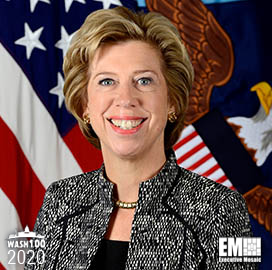The Greater Washington Region American Heart Association has appointed Dr. Cedric Sims, senior vice president with Booz Allen Hamilton, to chair the 2020-2021 Executives with Heart Campaign. Follow this link to register for the upcoming 2020 Greater Washington Region Heart Walk Digital Experience on Nov. 6th – 8th.
“It is because of leaders like Cedric that we are able to advance our lifesaving mission,” said Soula Antoniou, executive director, American Heart Association Greater Washington Region. “Thank you, Cedric, for your leadership and being a relentless force for a world of longer, healthier lives.”
The American Heart Association has set a goal to raise $750 thousand through Heart Walk by engaging local leaders to donate or raise $5,000+ to fund the mission of the American Heart Association.
Sims has more than 25 years of experience in acquisitions and risk management, cybersecurity, capital planning, portfolio and program governance and systems engineering applied to homeland security missions.
Sims, with Booz Allen’s Justice, Homeland Security and Transportation business, develops strategies to foster integration across the Department of Homeland Security (DHS) and delivers expertise, primarily cyber and analytics, to support complex missions.
Prior to joining Booz Allen, Sims served as president of Evermay Consulting Group, where he advised companies with strategic acquisition guidance, capture, and proposal services in delivering government services and technology solutions.
From 2010 until 2012, Sims established and led the DHS Office of Program Accountability and Risk Management. As a lead executive in the Management Directorate, his efforts promoted better accountability of the $18 billion portfolio of DHS acquisition investments and matured the acquisition risk management process.
He chaired the Centers of Excellence Council and provided strategic leadership to component acquisition executives. Sims also served as executive director of the Enterprise Business Management Office within the DHS Office of the Chief Information Officer, where he supervised enterprise strategies for governance of $6.4 billion of IT investments across DHS.
Sims will join the other notable members of the American Heart Association Committee, including Owen Billman, president of Blake Real Estate; Linda Gooden CEO of Gooden LLC; Barbara Humpton CEO of Siemens USA; Jim Garrettson CEO of Executive Mosaic; Kent Matlick SVP of Perspecta; Rob McHale, Sr. Client Partner of Korn Ferry; Erich Sanchack EVP of Digital Realty; Vicki Schmanske, group president of Intelligence with Leidos; and Mike Pittsman EVP, DAVIS Construction.
Follow this link to register for the upcoming 2020 Greater Washington Region Heart Walk Digital Experience on Nov. 6th – 8th.
About The American Heart Association
As the nation’s oldest and largest voluntary health organization. Our purpose is to help Americans live heart healthy and prevent America’s No. 1 and No. 5 killers, heart disease and stroke.
We are advocates of good health and promoters of positive behaviors, nutritious eating habits and healthy lifestyles. We also fund cutting-edge research and professional education programs. We promise to have an extraordinary impact on your life by empowering you and your loved ones to save lives, live healthier and enjoy more peace of mind about cardiovascular health.
Our 2020 goal is to improve the cardiovascular health of all Americans by 20 percent, while reducing deaths from cardiovascular diseases and stroke by 20 percent. And, we can’t do it without you.










